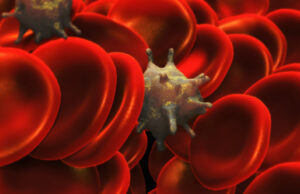Over two million units of platelets are transfused each year in the United States—the majority to hematology-oncology patients. Alloimmunization against class I human leukocyte antigens (HLA) can lead to platelet transfusion refractoriness (PTR); finding matched or compatible platelets is challenging and time-consuming. Thus, other matching methods are under investigation. In a recent issue of Transfusion, Karafin et al used the mean fluorescence intensity (MFI) of donor specific antibodies, similar to the method used to predict organ rejection in transplant patients, to find HLA-compatible platelet units when no HLA matched platelets were available. Using a cut-off of >1000 MFI for antibody presence, both donor and patient HLA antigens were typed using a Luminex-microbead array platform. Retrospectively, charts were reviewed over 4 years in 20 highly alloimmunized patients who received a total of 591 platelet units. Each patient received at least one low MFI platelet product. The corrected count increment (CCI) within six hours post-transfusion were significantly higher in patients transfused low MFI-selected platelets compared to random donor platelets (13,559 vs. 2121, p<0.0001), and CCI was similar in HLA antigen matched transfusions compared to low MFI-selected units (p=0.2). Larger, prospective studies are needed in order to confirm that low MFI selected platelets are a suitable alternative when HLA-matched platelets are not available.
References:
- Karafin MS, Schumacher C, Zhang J, Simpson P, Johnson ST, and KL Pierce. Human leukocyte antigen (HLA)-incompatible mean fluorescence intensity-selected platelet products have corrected count increments similar to HLA antigen-matched platelets. Transfusion 2021; 61; 2307-2316
- Brunker PAR, Pattanayak V, and GK Mahowald. Finding platelets: Don’t let the perfect be the enemy of the good. Transfusion 2021; 61; 2223-3338

